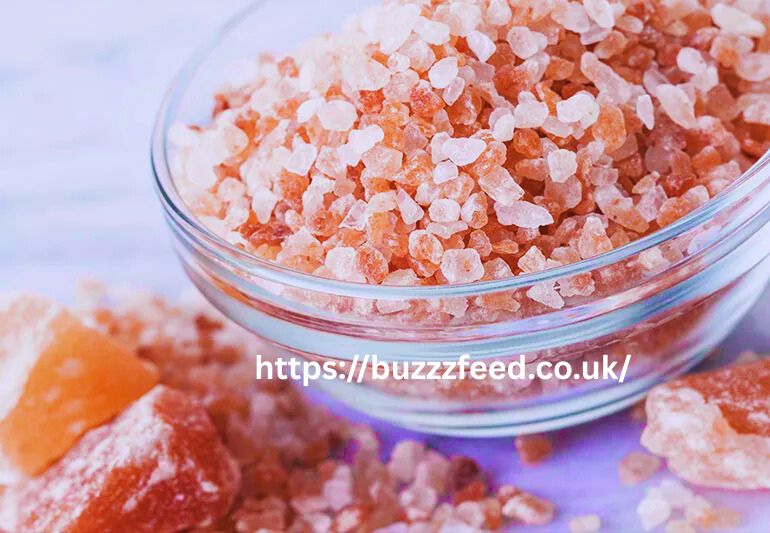When it comes to natural salts, Celtic salt stands apart for its rich mineral profile, artisanal harvesting process, and growing popularity among health-conscious individuals. Often referred to as “Sel Gris” (French for “gray salt”), Celtic sea salt is much more than just a seasoning; it’s a wellness powerhouse loaded with essential minerals that your body craves.
In this comprehensive guide, we’ll dive deep into what Celtic salt is, its benefits, uses, comparison with other salts, and how to incorporate it into your lifestyle for maximum health rewards.
What is Celtic Salt?
Celtic salt is a type of sea salt that is traditionally harvested along the coastal areas of Brittany, France — particularly from the Guérande salt marshes. The harvesting process is meticulous and entirely natural. Salt farmers, known as “paludiers,” use ancient methods that involve wooden tools to carefully rake the salt from shallow ponds, ensuring it retains its natural gray color and moisture content.
Unlike refined table salt, Celtic salt is unprocessed, unbleached, and free from additives, making it a pure source of essential minerals like magnesium, potassium, and calcium.
Nutritional Profile of Celtic Salt
One of the standout features of Celtic salt is its robust mineral content. Here’s a snapshot:
- Sodium chloride (the primary component) in a more balanced, natural form
- Magnesium – vital for muscle function and energy production
- Potassium – essential for heart health and fluid balance
- Calcium – critical for bone health
- Iron, zinc, and manganese in trace amounts
The presence of over 80 trace minerals gives Celtic salt its characteristic grayish tint and a slightly moist texture that distinguishes it from processed white salts.
Health Benefits of Celtic Salt
If you’re seeking natural ways to enhance health and vitality, switching to Celtic salt might be a small but powerful step. Let’s look at some key health benefits:
- 1. Promotes Electrolyte Balance
Thanks to its balanced sodium and mineral content, Celtic salt can help maintain the body’s electrolyte levels — crucial for hydration, muscle function, and nerve signaling.
- 2. Enhances Digestive Health
Adding a pinch of Celtic salt to meals or warm water can stimulate digestive enzymes and stomach acid production, supporting better digestion and nutrient absorption.
- 3. Supports Healthy Blood Pressure
While excessive salt intake is linked to hypertension, the natural balance of minerals in Celtic salt may actually support more stable blood pressure levels compared to highly refined table salt.
- 4. Boosts Immunity
The trace minerals found in Celtic salt play a role in strengthening the immune system. Minerals like zinc and iron are vital for maintaining immune resilience.
- 5. Improves Skin Health
Mineral-rich salts have long been used in skin therapies. You can create DIY scrubs or therapeutic baths using Celtic sea salt to rejuvenate the skin and reduce inflammation.
Celtic Salt vs. Himalayan Salt: Which is Better?
Both Celtic salt and Himalayan pink salt are praised for their health benefits, but they differ in several ways:
| Feature | Celtic Salt | Himalayan Salt |
|---|---|---|
| Color | Gray, moist texture | Pink, dry crystals |
| Mineral Content | Higher moisture; over 80 trace minerals | Rich in iron; over 80 minerals |
| Harvest Location | Brittany, France (Atlantic Ocean) | Khewra Mines, Pakistan (ancient sea beds) |
| Taste | Mild, slightly briny | Earthy, slightly sweet |
| Best Uses | Cooking, skin care, hydration | Cooking, decorative salt lamps, bath soaks |
Which one should you choose?
If you want a salt that maintains its natural oceanic moisture and flavor, Celtic salt is an exceptional choice. For a dry, mineral-rich salt ideal for grinding, Himalayan salt may be more convenient.
How to Use Celtic Salt
Incorporating Celtic salt into your daily routine is easy and versatile. Here’s how you can enjoy it:
1. Culinary Uses
- Seasoning for dishes: Sprinkle it over salads, soups, meats, and vegetables.
- Cooking pasta and grains: Add to boiling water for enhanced flavor.
- Fermentation: Ideal for making sauerkraut, pickles, and kimchi due to its mineral richness.
2. Health Rituals
- Sole Water: A detox drink made by dissolving Celtic salt in water to maintain hydration and mineral balance.
- Salt Baths: Add a handful to your bath to relax sore muscles and rejuvenate skin.
- Nasal Rinses: Mix with warm water for a gentle, natural saline solution to relieve sinus congestion.
3. Beauty Uses
- Face Scrubs: Combine Celtic salt with coconut oil for a natural exfoliant.
- Hair Care: Use in DIY scalp scrubs to promote healthy hair growth.
How to Store Celtic Salt
Because Celtic salt is naturally moist, it’s important to store it properly to maintain its quality:
- Use an airtight container to prevent excess evaporation or contamination.
- Avoid metal containers that could react with the salt.
- Store in a cool, dry place away from direct sunlight.
Where to Buy Authentic Celtic Salt
When shopping for Celtic salt, ensure you purchase from trusted brands that source directly from the Guérande salt marshes. Look for certifications or seals that confirm natural, unrefined, and additive-free processing.
Some popular brands include:
- Selina Naturally® (home of the original Celtic Sea Salt® brand)
- SaltWorks®
- Maison Charteau®
Always check for lab-tested certifications that assure you of purity and mineral content.
Final Thoughts: Why Choose Celtic Salt?
In a world dominated by over-processed foods, choosing natural, mineral-rich Celtic salt is a smart, simple step towards better health. With its unique gray color, rich taste, and wealth of essential minerals, it’s not just salt — it’s nature’s gift to your body.
Whether you’re a culinary enthusiast, a wellness seeker, or someone exploring clean living, making the switch to Celtic salt can elevate both your health and the flavors of your meals.



